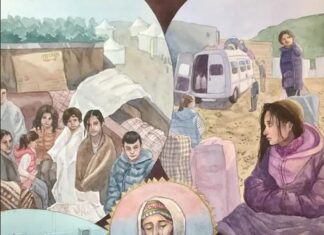It has been a week now since US President Biden’s April 24, 2021 statement recognizing the Armenian Genocide. This was a long overdue acknowledgment by the US of an event that took place 106 years ago, about which there is already general worldwide acceptance of the historic facts. The only issue left was the reluctance of a few states to define the 1915 event as genocide, in deference to Turkey. The symbolic genocide recognition by the US is a political non-event, except for the traumatized Armenians and paranoid Turks.
This obsession with properly naming it as genocide has caused many generations of Armenians to be traumatized, not able to move past 1915, spending enormous amounts of energy, academic, historic, political talent and resources at the expense of more productive activities for the growth of Armenia, Artsakh and diaspora. The Armenians’ trauma is directly caused by a similar and more obstinate obsession by the Turkish state in denying the true facts of 1915, spending not only enormous amounts of energy, academic, historic resources in Turkey but also hundreds of millions of dollars in lobbying activities in the US, as well as buying out a few foreign academics to advance their denialist version of history. The Turkish denial is caused by paranoia and fear of the 3R’s – recognition, to be followed by retribution (compensation), to be followed by restitution (of land).
This vicious cycle of genocide denial versus forced genocide recognition, fueled by paranoia and trauma, could only be reversed by starting dialogue between Turks and Armenians, based on the historic realities of 1915, as advocated by the late Hrant Dink. And the vicious cycle could only come to an end by having the Turkish Parliament acknowledge the historic realities of 1915, instead of parliaments of third states.
For a few years in the mid-2010s, there was a glimpse of hope that there could be some baby steps in Turkey toward facing history, at least allowing discussion. The genocide word was not punishable anymore and many books acknowledging the genocide were published or translated. There were conferences, and talk shows where pro- and anti-genocide viewpoints were freely discussed. April 24 commemorations were allowed in many cities, including Istanbul, Ankara, Izmir and Diyarbakir. Ittihadist leaders, the perpetrators of the Armenian Genocide, were condemned. Messages of condolences for “losses suffered by the Armenians during the First World War” were proclaimed by the government leaders.
Some minority-owned properties illegally expropriated in the past were returned. Reconstruction of a few Armenian churches was permitted, including the largest one in Diyarbakir – Surp Giragos Church. Restoration of the ruins of Ani were started with the cooperation of historic restoration experts from Armenia. Along with these positive steps of democratization, peaceful reconciliation initiatives toward the only remaining sizable minority, the Kurds, were advanced.
But then what happened? All these initiatives were thrown away starting in 2016. Islamic ideology merged with nationalist fascist ideology, creating a viciously intolerant and dictatorial regime where only Sunni Turks, or rather, Sunni Turks loyal to the ruling party are allowed to live and all others have become barely tolerated second class citizens. Journalists, academics, hundreds of thousands of citizens, Kurdish political leaders – in short, anyone questioning the authority of the ruling party, were dismissed and jailed. Even before Biden’s statement, April 24 commemorations were banned.










